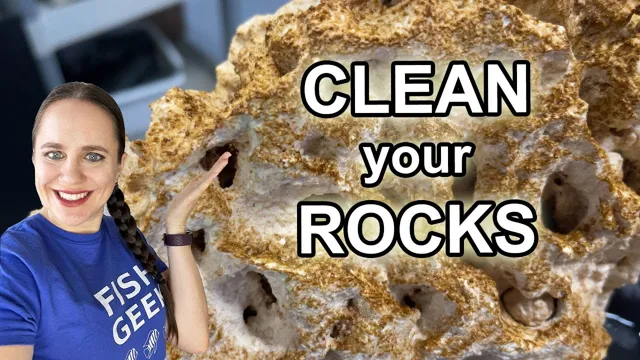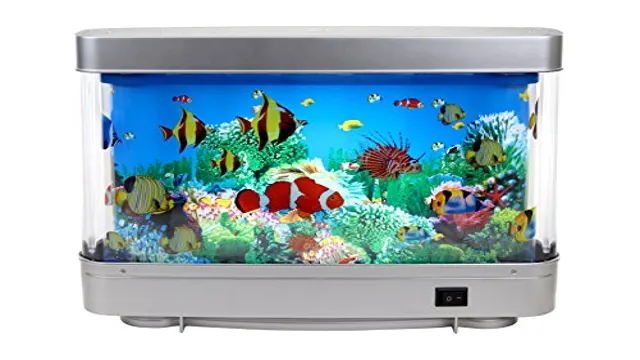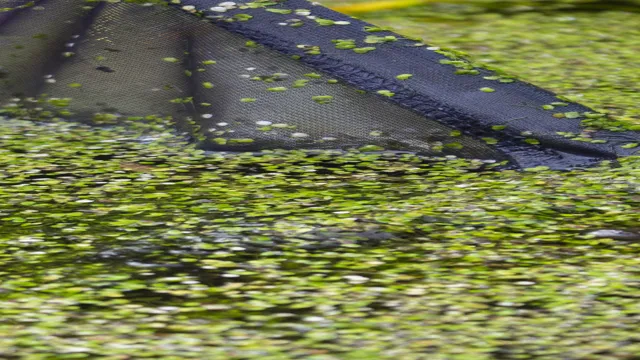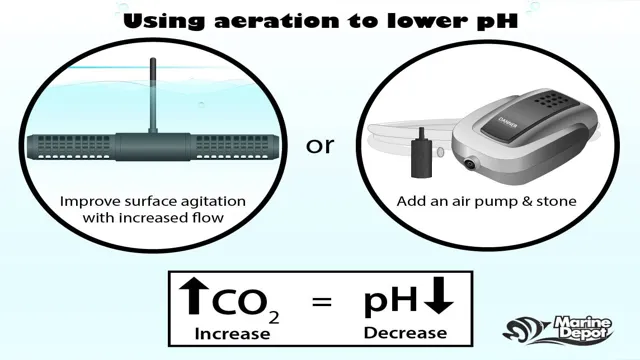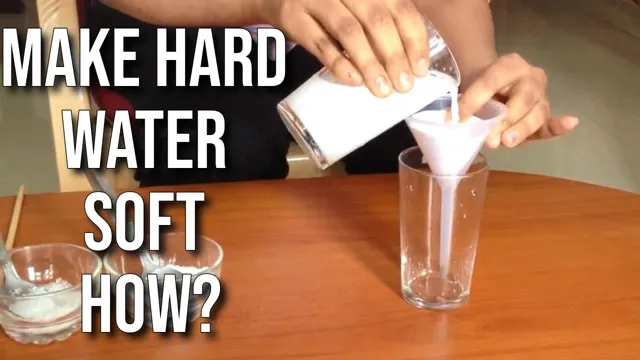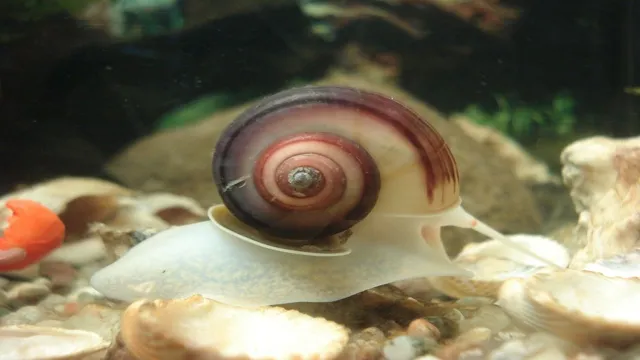Seeing algae growing in your aquarium can be quite disheartening, especially when it covers the rocks, diminishing the beauty of your aquatic setup. Not only is it unsightly, but it can also be harmful to the fish and plants in your tank. Luckily, there are effective ways to remove algae from aquarium rocks, and we’re here to share them with you.
First off, it’s essential to understand the cause of algae growth, which can be attributed to several factors, including excessive lighting, excess nutrients, and poor water circulation. Knowing the root cause can help prevent future algae growth, but for now, let’s focus on getting rid of the existing algae. There are several ways to remove algae from aquarium rocks, including manual removal, using algae scrubbers or magnets, and chemical treatments.
For manual removal, you can use a scrub brush or old toothbrush to scrub the rocks gently. With algae scrubbers or magnets, you attach the tool to the glass and scrub away the algae from the rocks. As for chemical treatments, it’s essential to use algae removers that are safe for aquarium use, and follow the manufacturer’s instructions carefully.
Remember to clean your aquarium filters regularly and limit the amount of light you provide. Another excellent tip is to introduce algae eaters to your tank, such as snails, shrimp, or certain species of fish, which can help keep the algae population under control. In short, getting rid of algae from your aquarium rocks is a manageable task.
With proper maintenance and care, you can keep your aquarium clean and healthy for your aquatic friends and maintain its aesthetic appeal.
Identifying the Type of Algae on Your Rocks
If you’re wondering how to get algae off rocks in your aquarium, the first step is to identify the type of algae. Different types require different approaches for removal. Green algae, for example, can often be removed by simply rubbing it off the rocks with a clean cloth or brush.
However, brown algae may require a more thorough cleaning with specialized algae scrubbers or even the use of chemicals. Red or black algae can be particularly stubborn and may require a combination of manual removal and chemical treatment. It’s important to always be careful when using any type of chemicals in your aquarium, as they can be harmful to both your fish and your plants.
Regular maintenance, such as water changes and proper lighting, can also help prevent algae growth on your rocks. By knowing the type of algae you’re dealing with and taking the necessary steps for removal, you can keep your aquarium rocks looking clean and healthy.
Green Algae
Green algae can be a common sight on aquarium rocks, but it’s important to identify the type of algae present to properly address and prevent it from harming your aquarium’s ecosystem. The most common types of green algae found on rocks are hair algae, filamentous algae, and spot algae. Hair algae can be identified by their long, stringy appearance that can quickly take over rocks if not managed properly.
Filamentous algae, on the other hand, are thick and fuzzy in texture, and can create a green carpet over the rocks if left unaddressed. Spot algae, also known as pitting algae, are small green dots that are easy to remove manually. Knowing the type of green algae present on your rocks can help you decide on the appropriate course of action, including adjusting lighting, fertilizer levels, and adding certain fish or invertebrates to help control the growth.
Remember, maintaining a healthy aquatic environment starts with identifying and managing the type of algae on your rocks, leading to a thriving and beautiful aquarium.

Brown Algae
Brown algae can be a common sight on the rocks in your aquarium. This type of algae is often found in marine setups, and it can vary in color from light brown to nearly black. To identify the type of algae on your rocks, you can look at its texture.
Brown algae often forms in large, flat patches and has a slimy feel. It may also have air bubbles trapped in it, giving it a bubbly appearance. Brown algae can be caused by excess nutrients in the water, so it’s essential to maintain good water quality and perform regular water changes to keep it at bay.
Additionally, you can introduce algae-eating creatures like snails or hermit crabs to help manage the growth. By keeping an eye on the appearance of the algae on your rocks and taking steps to prevent overgrowth, you can maintain a beautiful and healthy aquarium environment for your fish and other aquatic inhabitants.
Black Algae
Black algae can be a stubborn and unsightly problem for any aquarium owner. But before you can effectively remove it, you need to be able to identify what type of algae you’re dealing with. Black algae is distinct from other types of algae because it is black or dark green in color and has a hard, gritty texture. (See Also: How to Build a Multiple Aquarium Rack: Step-by-Step Guide for Fish Enthusiasts)
It tends to grow on the surfaces of rocks, particularly in areas of high light and low water flow. This type of algae is notoriously difficult to eradicate and can quickly take over your aquarium if left unchecked. To get rid of black algae, you’ll need to use a combination of physical removal and chemical treatments, as well as making adjustments to your aquarium’s lighting, water flow, and nutrient levels.
With persistence and a little bit of know-how, though, you can eliminate the black algae and restore the beauty and health of your aquarium.
Tools You Will Need
When it comes to cleaning the algae off rocks in your aquarium, you’ll need a few tools to get the job done. First and foremost, you’ll need a cleaning brush or scraper, such as a toothbrush or algae scraper, to physically remove the algae from the rocks. If the algae has gotten out of hand and is covering a large area, you may also want to consider investing in a gravel vacuum.
This tool will allow you to remove debris and detritus from the bottom of your tank while also taking care of any algae that may be growing on the rocks down there. Additionally, it’s always a good idea to be sure you have some sort of gloves or protective gear to avoid any skin irritation while you’re working in the tank. With the right tools in hand, you’ll be well-equipped to get your rocks looking clean and algae-free in no time!
Algae Scraper or Brush
An algae scraper or brush is an essential tool that every aquarium owner needs. It helps keep the tank clean by removing algae from the glass. Not only does it help with the aesthetics of the aquarium, but it also keeps the water quality high.
When selecting an algae scraper or brush, there are a few things to consider. The size of the tool should be appropriate for the size of the tank. For larger tanks, longer handles are essential to reach all areas.
Also, the type of algae in the tank will dictate the type of scraper or brush needed. For instance, a softer brush will work well on algae that is easy to remove, while a scraper may be needed for tougher algae. Another feature that should be considered is whether the scraper or brush is magnetized.
Magnetized scrapers are ideal for larger tanks, as they allow for the removal of algae without having to get one’s hands wet. Overall, selecting the right algae scraper or brush is essential for keeping the aquarium clean and healthy for aquatic life.
Bleach or Hydrogen Peroxide
When it comes to cleaning surfaces and killing germs, bleach or hydrogen peroxide are two commonly used options. However, before you decide which one to use, you’ll need to consider a few things and gather some tools to help you out. First, let’s talk about bleach.
You will need protective gear to wear when handling bleach. It can irritate your skin, eyes, and even your respiratory system, so make sure you have gloves, goggles, and a mask on hand. Additionally, you’ll need a measuring cup and a bucket to mix the bleach solution properly.
To make a solution that is effective at killing germs, you’ll want to mix one-third cup of bleach with one gallon of water. On the other hand, hydrogen peroxide is less harsh than bleach but still effective at killing germs. To use hydrogen peroxide, you will need a spray bottle and a rag or sponge.
You can either use it straight out of the bottle or dilute it with water, depending on the strength you need. Remember to wear gloves to make sure the hydrogen peroxide doesn’t irritate your skin. In conclusion, both bleach and hydrogen peroxide can be effective at killing germs, but you’ll need to consider your needs and the tools you have available before deciding which one to use.
No matter which one you choose, however, make sure to wear protective gear and follow the instructions carefully to stay safe and achieve the desired results.
Glass Cleaner
Glass Cleaner When it comes to cleaning your windows, mirrors, and other glass surfaces, having the right tools is essential. Firstly, you will need a quality glass cleaner that is specifically designed to cut through grease and grime to leave your glass surfaces sparkling clean. Look for a product that is streak-free and contains no harsh chemicals that could damage the glass.
Along with a glass cleaner, you will also need a microfiber cloth to wipe away dirt and residue. A squeegee can also come in handy for larger surfaces, making it easy to remove excess water and achieve a streak-free finish. Finally, don’t forget to wear protective gloves to avoid any contact with harmful chemicals. (See Also: How to Prepare a Saltwater Aquarium: A Complete Guide for Beginners)
With these essential tools on hand, you’ll be able to clean your glass surfaces with ease, leaving them crystal clear, and free of streaks. So let’s make your windows shine with the proper cleaning tools!
Step-by-Step Guide to Remove Algae From Rocks
If you’re struggling with algae growth on the rocks in your aquarium, don’t worry – it’s a common problem for many fish keepers. There are a few simple steps you can take to safely remove the algae and keep your aquarium looking clean and healthy. First, you’ll want to remove any larger or visible pieces of algae with a soft brush or scraper.
Then, you can use an algae scraper or pad to gently scrub away the rest of the algae buildup. Be cautious not to scratch the surface of the rocks in the process. Finally, consider reducing the amount of light your aquarium receives or adjusting the nutrient levels of the water to prevent further algae growth.
With a bit of extra care and attention, you can easily get rid of algae on your aquarium rocks and keep your fish happy and healthy!
Step 1: Remove the Rocks
If you are experiencing an algae problem on your rocks, don’t worry because it’s not uncommon. And while it may seem like a daunting task, removing algae from rocks is a fairly simple process that can be done by anyone. The first step in removing algae from rocks is to physically remove any larger rocks or debris that may be blocking access to the algae.
Once you have done this, use a stiff brush to scrub away any algae growth. This should remove most of the algae and any loose debris on the rocks. However, if there is still some algae left, it may be necessary to use a chemical algae remover.
By following these simple steps, you can effectively remove algae from rocks and restore their natural beauty. Remember that prevention is the best cure, so be sure to regularly clean your rocks and reduce any excess nutrients in your water to prevent future algae growth.
Step 2: Clean the Rocks
Cleaning algae from rocks can be a daunting task, but it is an important step in maintaining the health of your aquarium. Once you have removed any large clumps of algae from the rocks using a brush or scraper, it is time to give them a thorough cleaning. Start by filling a bucket with aquarium water and adding a few drops of a gentle aquarium-safe cleanser.
Place the rocks in the bucket and gently scrub them with a clean brush or sponge. Avoid using any harsh chemicals or abrasive materials that may damage the rocks or harm the aquatic life in your tank. Rinse the rocks thoroughly with fresh water before returning them to the aquarium.
Regularly cleaning algae from your aquarium rocks will not only improve the appearance of your tank, but it will also help to keep your fish and other aquatic creatures healthy and happy.
Step 3: Soak the Rocks
To effectively remove algae from rocks in your aquarium, it’s important to follow a step-by-step guide. One essential step is to soak the rocks in a solution before cleaning them. Soaking the rocks helps to kill any remaining algae that wasn’t removed during the scrubbing process.
You can soak the rocks in a variety of solutions, including a bleach solution or a hydrogen peroxide solution. By letting the rocks soak for a few hours, you’ll ensure that any remaining algae is broken down and removed. Make sure to rinse the rocks thoroughly with water afterwards, so that no residue is left behind.
By following this step, you can ensure that your rocks are algae-free and your aquarium stays clean and healthy.
Step 4: Rinse and Reintroduce the Rocks to Your Aquarium
After successfully cleaning the algae-covered rocks, it’s time to reintroduce them back to your aquarium. First, give them a thorough rinse using cold water to remove any remaining debris or cleaning solution. It’s important to ensure that no soap or bleach is left on the rocks, as this can be harmful to your aquatic pets. (See Also: How to Plumb 150 Gallon Aquarium to Sump: A Complete Guide for Beginners)
Once they are clean, you can place them back into the tank. But before doing so, make sure to fill a clean bucket with tap water and add a dechlorinator solution. Let the rocks soak in this solution for 24 hours to neutralize any remaining chlorine.
This will ensure that your aquarium inhabitants are safe and healthy. After the 24-hour soak, it’s safe to reintroduce your clean rocks back to the aquarium. Your pets will love their fresh, clean, and algae-free environment!
Conclusion
In the end, cleaning algae off your aquarium rocks may not be the most glamorous task, but it’s essential for the health and beauty of your aquatic habitat. Embrace your inner rock cleaner and get ready to scrub away the green gunk. Who knows, you might even discover a hidden talent for rock polishing while you’re at it! Just remember to follow the tips and tricks we’ve laid out, and you’ll have a sparkling clean aquarium in no time.
“
FAQs
What causes algae to grow on rocks in aquariums?
Algae growth in aquariums is often caused by excess nutrients and light.
How can I prevent algae from growing on rocks in my aquarium?
You can prevent algae growth by reducing the amount of light in the aquarium, limiting nutrient levels, and maintaining proper water flow.
Can I manually remove algae from rocks in my aquarium?
Yes, you can scrape algae off rocks using an aquarium-safe scraper or brush.
Will introducing algae-eating fish help control algae growth on rocks?
Yes, some fish species, such as plecos and otocinclus, will eat algae and help keep rocks clean.
What are some natural remedies for removing algae from rocks in aquariums?
Some natural remedies include adding aquarium-safe plants, increasing water flow, and using a UV sterilizer.
Can I use chemicals to remove algae from rocks in my aquarium?
While there are chemicals available for algae removal, they can harm other inhabitants in the aquarium and should only be used as a last resort.
How often should I clean algae off rocks in my aquarium?
Algae should be removed as soon as it is noticed to prevent excessive growth. Regular maintenance should include cleaning rocks as needed during water changes.

